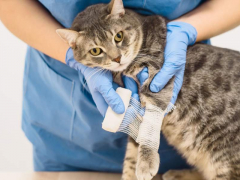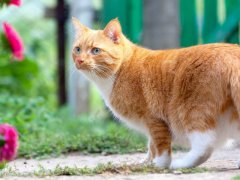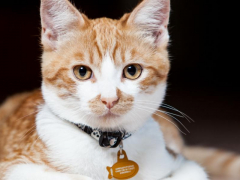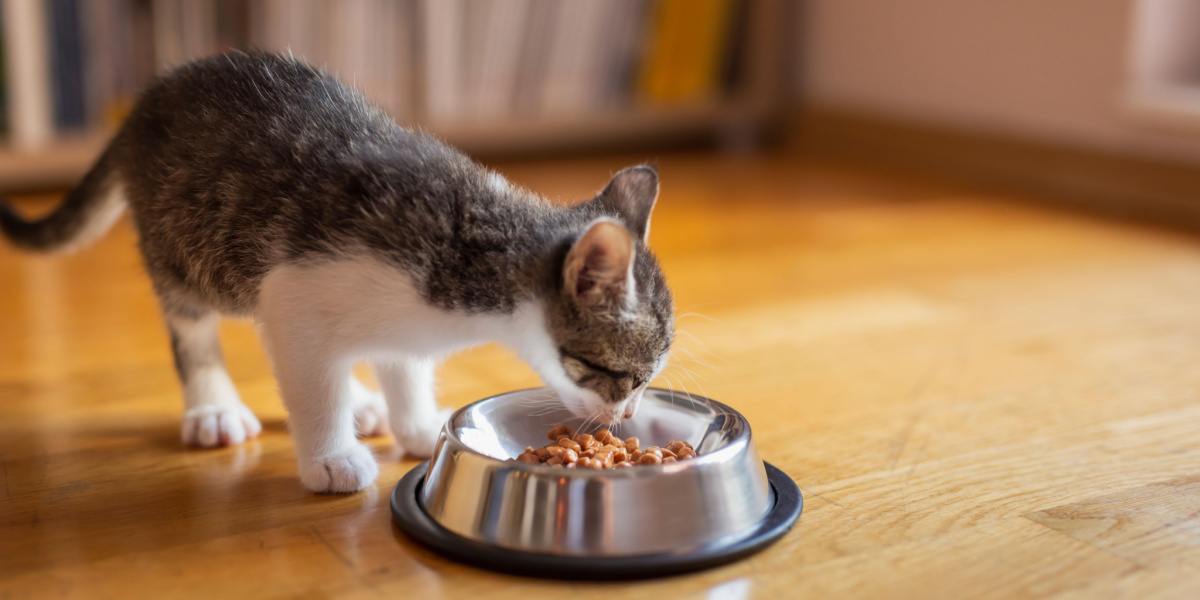
One of the most common questions that I get asked as a veterinarian is when to switch from kitten to cat food. This is usually accompanied by the question of why cats and kittens need different foods in the first place.
Kittens usually transition to adult food around their first birthday. The exception is larger cat breeds because they take longer to reach their mature size and need kitten food for longer.
Kittens are rapidly growing and developing, and need a different proportion of nutrients and calories to fuel this growth than adult cats do. Once older, cats need a diet more focused on the maintenance of their daily needs.
Feeding a suitable and balanced diet for your pet’s life stage is really important. Read on to find out more!
About Kittens’ Dietary Needs
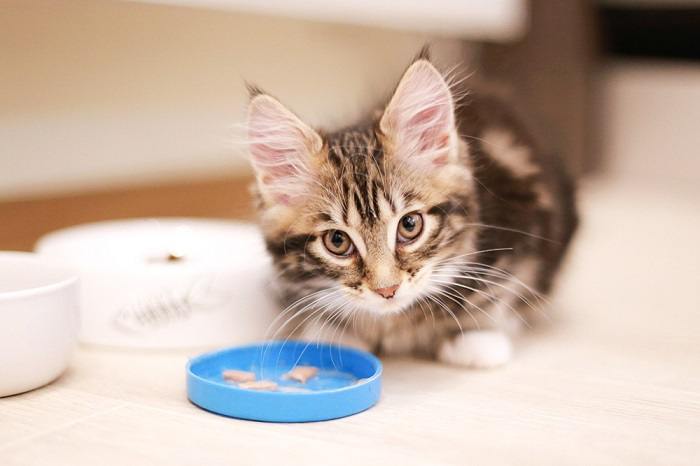
Most kittens will need kitten food until their first birthday, with the exception being larger breeds.
Because kittens grow rapidly, they require the correct balance of calories, fats, proteins, vitamins, and minerals to support their development.
Kittens begin to wean at about 3-4 weeks old. After reaching this stage, kittens need wet food or dry food that has been moistened. Between 6-8 weeks, kittens are fully weaned and can eat either wet or dry kitten food.
Young kittens between 2-6 months of age are in the most rapid stage of their growth, and their nutrition is really important. They need, per pound of weight, up to double the number of calories that an adult cat needs!
However, a kitten’s stomach is still small, so kitten food needs to be energy-dense and packed with nutrients. It is also recommended to feed kittens 3-4 times a day at this age. From 6 months, the rate of growth slows. Kittens still require a specific diet as they are still developing, but they can start eating larger meals and drop to being fed twice daily.
Kitten food is high in fats, which are both a rich source of energy but also contain essential fatty acids, such as DHA (docosahexaenoic acid) for the development of vision, the nervous system, and essential organs, such as the brain. Cats generally need high protein levels in their diets. For kittens, this is especially important to support rapid growth and provide essential amino acids such as arginine and lysine.
Diets made for kittens are often supplemented with high levels of vitamins and minerals. Growing kittens need calcium and phosphorus for bone development. They also need higher levels of magnesium, iodine, and Vitamin A.
Also Read: Can Kittens Eat Adult Cat Food? A Vet Explains
When Kittens Become Adults
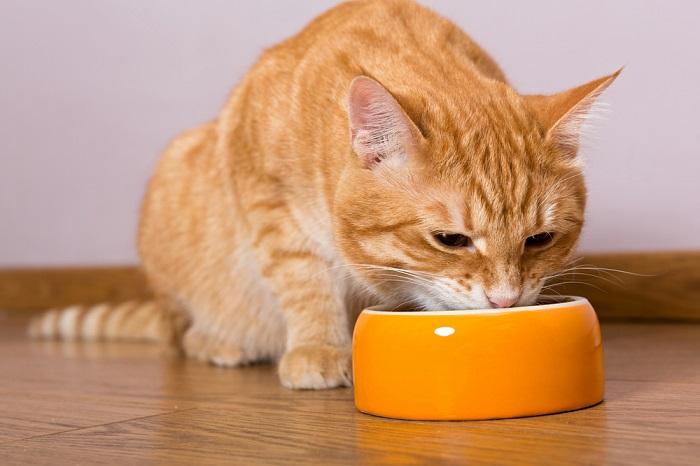
While kittens do grow rapidly as they become adults, there is a misconception about how early they become adults.
There is a common misconception that kittens mature at around 6 months old. This is actually when they become sexually mature, but their physical growth continues until they are around 10-12 months old.
The exact time of a kitten’s transition into adulthood will depend on their sex, breed, and size. Large breed cats, such as the Maine Coon, don’t reach their adult size until around 18 months – 2 years, so it is recommended to keep these larger types on kitten food until around 18 months.
Also Read: Early-Age Spaying & Neutering Of Cats
Adult Cat Dietary Needs
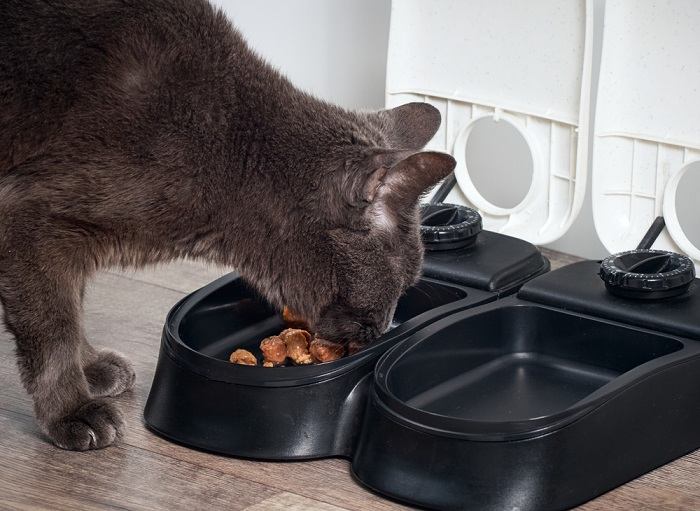
Whether you decide to feed your cat wet food, dry food, or a mixture of both, what is most important is that the food gives your cat the nutrition that they need at all stages of life.
Cats are obligate carnivores and need high levels of animal protein in their diet. Protein is needed both for muscle mass and also to provide essential amino acids such as arginine and lysine. There are certain nutrients that cats cannot make themselves, such as taurine, which must be included in their diet.
Cats are less reliant on carbohydrates than people, dogs, and other mammals. They use fats for energy, but also to provide essential fatty acids, and to aid the absorption of fat-soluble vitamins. A good balance of other nutrients is required, such as calcium, phosphorus, and magnesium. Adult cats have different nutritional needs than kittens. Special care must be taken to ensure an appropriate number of calories for their size and activity level, to guard against obesity.
Also Read: The Complete Feeding Guide From Kittens To Seniors
The type of food (wet or dry) is dependent on each individual cat’s preference, with advantages and disadvantages to both. Whichever is chosen, the food should be nutritionally complete, and appropriately balanced for age and lifestyle. Always check the food label to ensure the food has been certified by The Association of American Feed Control Officials (AAFCO). This means that the food is of suitable quality and is nutritionally complete.
Unless you are suitably qualified in animal nutrition, a commercial diet is usually the best option for your pet. Home-prepared diets can be very difficult to balance with the correct nutrients for cats. The occasional treat is fine, but a feline-specific food is preferred. Remember, human foods such as chocolate, grapes, raisins, caffeine, onions, and garlic are all toxic to cats.
Also Read: 15 Human Foods That Are Poisonous & Toxic To Cats
How to Transition From Kitten to Cat Food
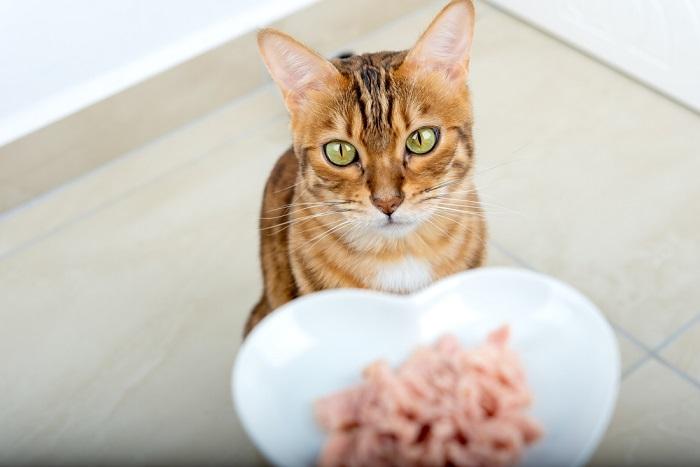
Transitioning your cat’s diet takes a little bit of time to avoid GI upset.
Any dietary change for your cat should always be done gradually and carefully. This will help to avoid a stomach upset. An abrupt change of diet can lead to vomiting and diarrhea as your cat’s gastrointestinal system struggles to adjust. It is also more common to see food aversion or refusal if a gradual transition hasn’t been made.
Around the time your cat hits 12 months of age (later if a large breed), choose your high-quality, balanced adult cat food and follow this guide to transition your cat over the course of a week or so. The adult food can be wet, dry, or a mixture of both – as long as the feeding guidelines are followed.
- Days 1 & 2 – serve 75% kitten food and 25% adult cat food.
- Days 3 & 4 – serve 50% kitten food and 50% adult cat food.
- Days 5 & 6 – serve 25% kitten food and 75% adult cat food.
- Days 7 onwards – give 100% adult cat food.
When calculating the percentage of food to use, make sure you are using the correct amount for each different food. There will be labels suggesting a daily ration according to your cat’s current weight and condition. For example, if your 12-month-old kitten was eating 70g of dry kibble daily, and their new adult food recommends 60g daily, their schedule would look like this:
- Days 1 & 2 – 52.5g of kitten food, plus 15g of adult food.
- Days 3 & 4 – 35g of kitten food, plus 30g of adult food.
- Days 5 & 6 – 17.5g of kitten food, plus 45g of adult food.
- Days 7 onwards – 60g of adult food.
This schedule ensures that your cat’s daily dietary requirements are being met while transitioning to their new food. These amounts can be split into suitable portions if your cat is fed more than once daily.
Also Read: Why Does My Cat Steal My Other Cat’s Food?
Conclusion
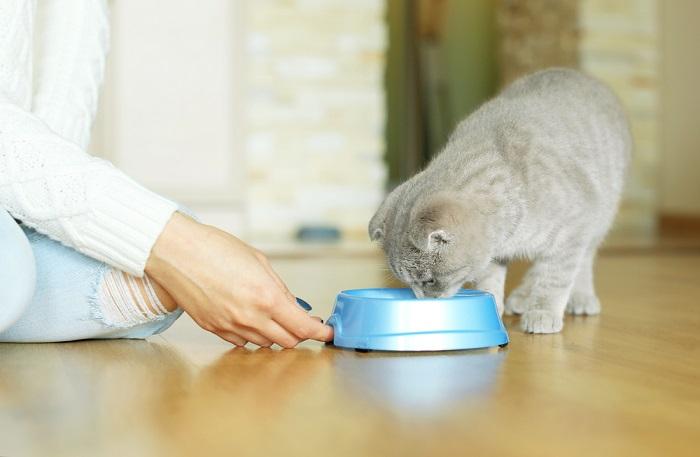
Because kittens require a lot of nutrient-dense food to support their rapid growth and development, it’s important to not transition them to adult cat food too quickly.
Kittens may be cute little fluff-bundles, but they are also highly active, fast-growing, and are developing vital organs and systems. Your kitten needs pet food that is tailored to their nutritional needs, involving higher proportions of calories, protein, and micronutrients to support their growth.
Adult cats need food that is balanced for their needs: providing adequate protein, energy, and nutrients without causing excessive weight gain. Most kittens transition to adult food at around a year old, except larger breeds which stay on kitten food until around 1.5 years of age. The transition should be done over the course of a week or so, to prevent gastrointestinal upset.
Also Read: The 10 Best Healthy Canned, Soft & Wet Cat Foods For 2022
